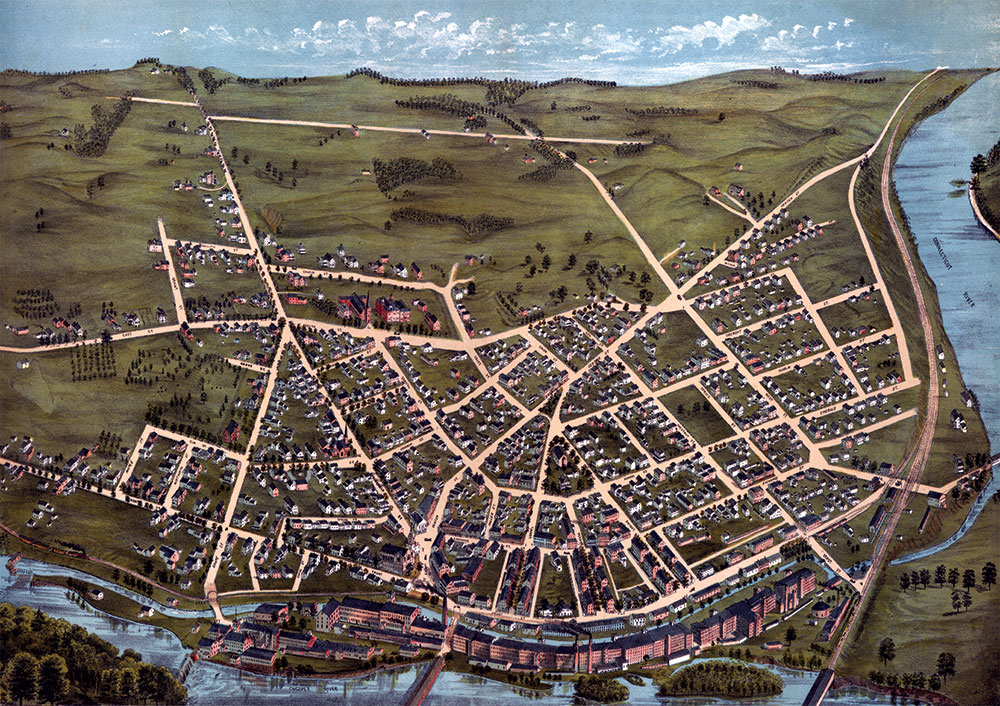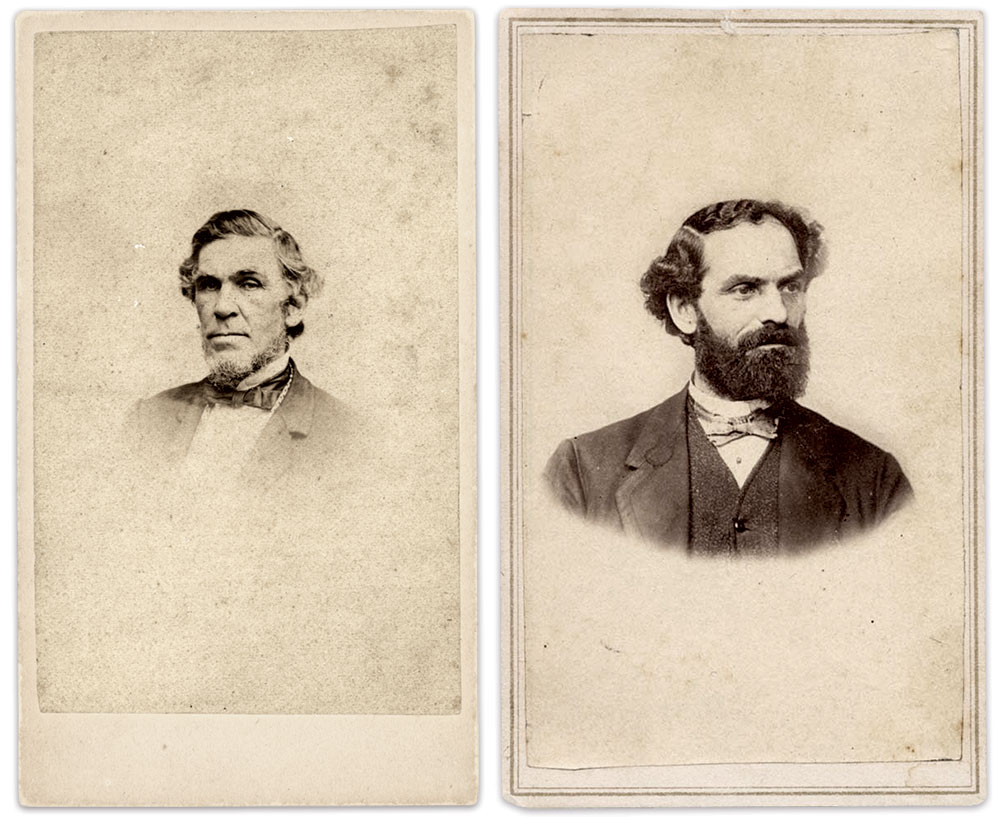By Ron Maness, with images and artifacts from the author’s collection
This group of men is identified as artisans of the Ames Manufacturing Company, makers of military arms and other equipment. They pose near the factory in Chicopee, Mass., circa 1850. About 150 souls strong, within a decade their ranks would swell by 10 times as the munitions they made were central to prosecuting the war that tore the nation in two.

The image was likely taken from an upper window of the Universalist Church, located at the intersection of Center and Springfield Streets in Chicopee, and looking east. The buildings (painted white) in the upper left corner front Spring Street which can be seen intersecting Springfield Street just beyond the sign which reads, “BOSTON ONE PRICE / CLOTHING STORE.” To arrive at this location, Ames employees walked a short distance from the factory entrance, along Front Street through Market Square.

along the Chicopee River and the town of Chicopee. Library of Congress.
An examination of the group reveals examples of the products for which Ames is known. Toward the back of the assembled workmen, in the middle of and below the whitewashed fence, is a cannon mounted on a naval gun carriage. To the right of the cannon is a rack displaying swords arranged in a criss-cross pattern. To the right of the sword rack are two banners with unreadable text. Just below the banner furthest to the right, are silver and silver-plated holloware and figural items, and a large silver tray.
None of the individuals are identified. Individuals likely to be present include:
- James T. Ames, agent of the company, who may be standing front and center to the right of the silver tray.
- George Arms, Ames’ nephew who started work as a laborer and would eventually enter the front office.
- Emerson Gaylord, who worked in the Ames leather works and purchased that operation in 1856.
- Richard Bates Inshaw, Jr., a talented metal engraver.
- Corey McFarland, instrumental in the development of the Ames rifled musket machinery for the Springfield Arsenal and Ames’ representative to England to install the P53 Enfield machinery for the London Armoury Company in 1858.
- Silas Mosman, Jr., who oversaw the Ames foundry operations which produced hundreds of cannon, numerous monuments, and the doors to the Senate chamber in the U.S. Capitol.

The reason for the gathering of the company employees, and a group of onlookers to the far right, is as of yet undiscovered. Many wear a ribbon on the lapels of their coats. Some of the younger men sport wheel hats in place of the prevalent stovepipe style. One explanation is they assembled for a local parade or another civic event.

- Small cannon mounted on a four-wheeled naval gun carriage.
- Rack displaying swords arranged in a criss-cross pattern.
- Banners with unreadable text.
- Silver and silver-plated holloware and figural items, and a large silver tray. (Example of an Ames-made tray presented to Robert Eddy Bemis in 1852. Bemis was one of the original shareholders of the Ames company as organized about 1845.)
Ron Maness is a MI Contributing Editor
SPREAD THE WORD: We encourage you to share this story on social media and elsewhere to educate and raise awareness. If you wish to use any image on this page for another purpose, please request permission.
LEARN MORE about Military Images, America’s only magazine dedicated to showcasing, interpreting and preserving Civil War portrait photography.
VISIT OUR STORE to subscribe, renew a subscription, and more.

